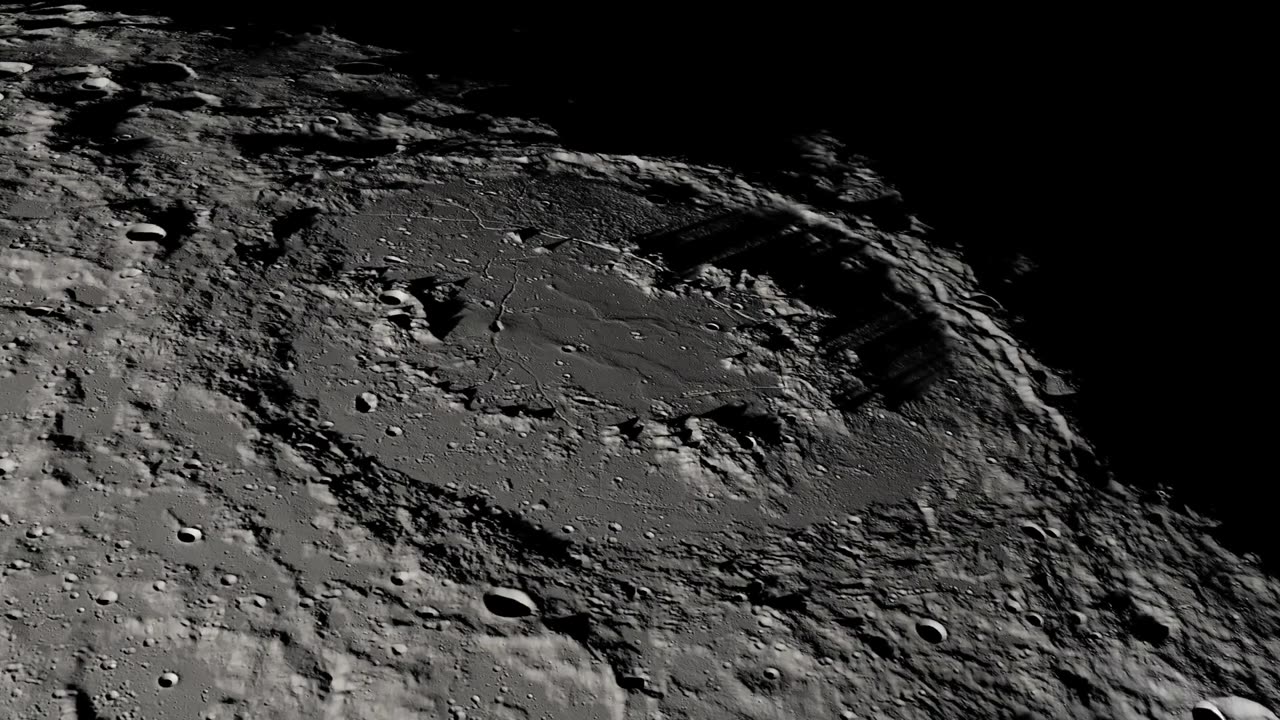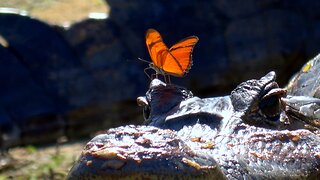Premium Only Content

NASA's : Moon Images from NASA's Lunar Reconnaissance Orbiter
The Lunar Reconnaissance Orbiter (LRO) is a NASA spacecraft that was launched on June 18, 2009, with the primary mission of studying the Moon. LRO is equipped with a suite of scientific instruments designed to capture detailed images and data about the lunar surface. Here is a description of some of the key features and capabilities related to the images captured by LRO:
High-Resolution Imaging:
One of the primary objectives of LRO is to capture high-resolution images of the Moon's surface. It is equipped with the Lunar Reconnaissance Orbiter Camera (LROC), which consists of three different camera systems: the Wide Angle Camera (WAC) and two Narrow Angle Cameras (NACs). These cameras work together to capture images of the Moon with exceptional detail.
Mapping the Moon:
LRO's imaging capabilities are used to create detailed topographic maps of the lunar surface. By taking images from various angles and lighting conditions, it can create 3D models of the terrain, helping scientists understand the Moon's geology and landforms better.
Monitoring Changes:
LRO has been orbiting the Moon for an extended period, allowing it to capture images of the same locations at different times. This enables scientists to monitor changes on the lunar surface, such as impacts from meteoroids or changes in the Moon's lighting conditions.
Identifying Landing Sites:
LRO has played a crucial role in identifying potential landing sites for future lunar missions, including crewed missions. Its detailed images help mission planners select safe and scientifically interesting locations for exploration.
Capturing Apollo Landing Sites:
LRO has captured remarkable images of the Apollo landing sites, including the lunar modules and equipment left behind by the astronauts. These images provide historical context and serve as a testament to human lunar exploration.
Lighting Variations:
LRO's ability to capture images at various lighting angles has been instrumental in revealing details in shadowed regions, such as the interiors of craters and the presence of water ice.
Public Access:
Many of the images captured by LRO are made available to the public through NASA's Planetary Data System (PDS) and the LROC website. These images are used by scientists, educators, and space enthusiasts worldwide.
Overall, the Lunar Reconnaissance Orbiter has significantly expanded our understanding of the Moon's geology, topography, and surface features through its high-resolution imaging capabilities. It continues to play a vital role in lunar exploration and research.
-
 8:19
8:19
Adam Does Movies
1 day ago $0.13 earnedOne Battle After Another - Movie Review
4711 -
 39:24
39:24
NAG Daily
13 hours agoThe Rezendes Rundown Ep. 21 - National Distress
54 -
 LIVE
LIVE
BEK TV
22 hours agoTrent Loos in the Morning - 9/30/2025
236 watching -
 LIVE
LIVE
The Bubba Army
21 hours agoTrump & Netanyahu Done Deal? - Bubba the Love Sponge® Show | 9/30/25
3,237 watching -
 9:15
9:15
ThinkStory
1 day ago6 INSANE Cipher Theories!
10.5K -
 20:54
20:54
Jasmin Laine
16 hours ago"Why Are You AVOIDING Me?"—Poilievre GRILLS Carney as He CRUMBLES Under Pressure LIVE
14.4K27 -
 7:13
7:13
China Uncensored
18 hours agoChina’s Military Is Out of Control. Can This INSANE Plan Stop It?
5.35K8 -
 1:46
1:46
WildCreatures
17 days ago $0.52 earnedButterfly risks its life to drink crocodile tears in the Pantanal
5.13K5 -
 24:38
24:38
Professor Nez
18 hours agoTrump Just SHOOK the Democrats to the CORE with THIS MOVE!
19.8K13 -
 14:16
14:16
Actual Justice Warrior
3 days agoManhattan DA Says It's Okay To ATTACK Pro Life Activists
20.4K29